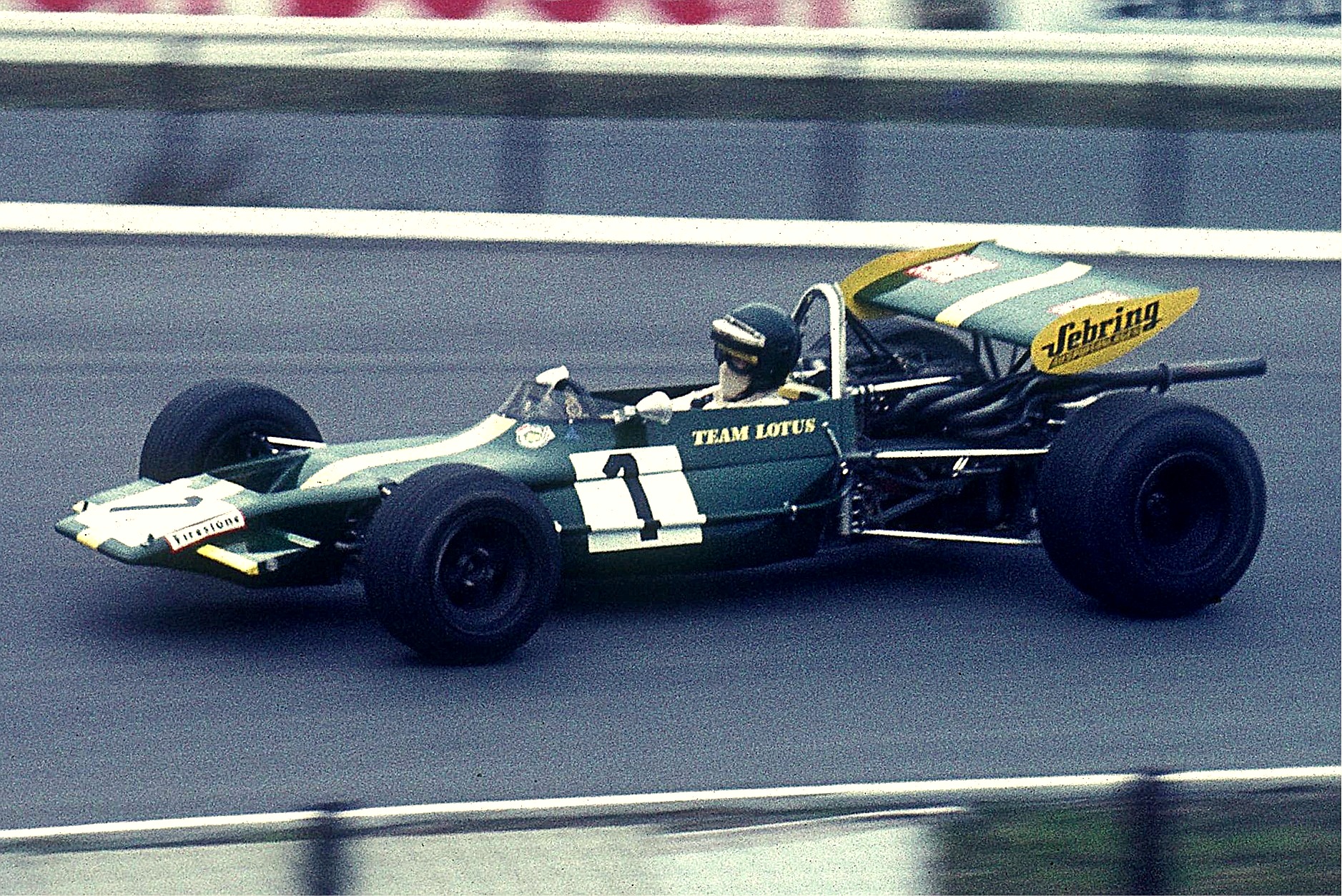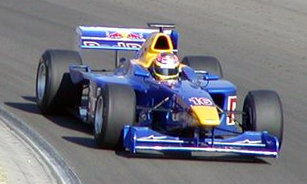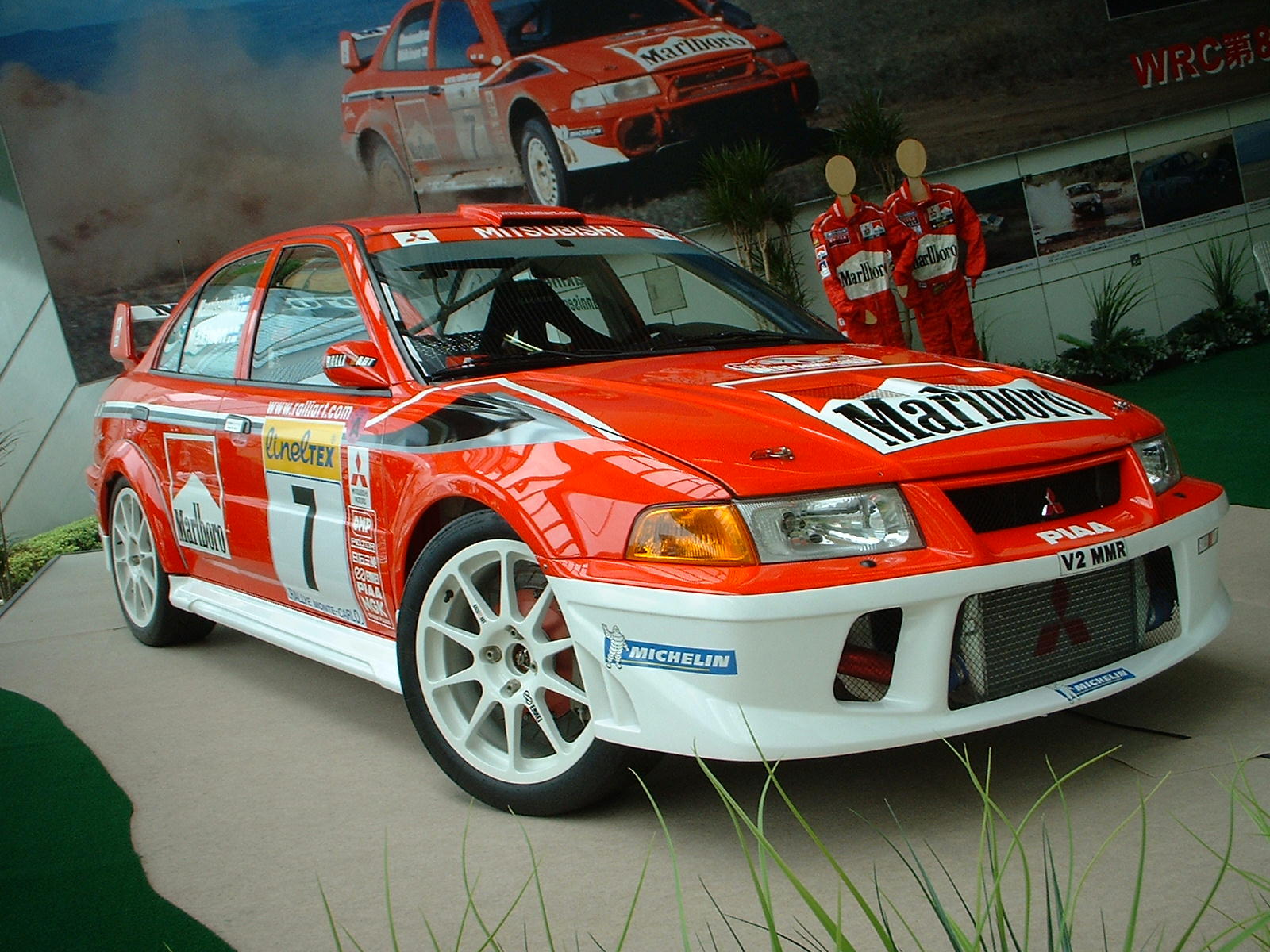|
Group D (FIA)
In motorsport, Group D is for international formula racing cars classified by the Fédération Internationale de l'Automobile in Appendix J of its International Sporting Code. The group was first described in Article 251 "Classification and Definitions", in 1982 along with the simultaneous introduction of Groups N, A, B, C and E. Group D was placed in Category II for Competition Cars, cars that were single builds for racing purposes only. The Group continued to be defined in new publications of Appendix J Article 251, usually annually, until 2019. Although Appendix J does define Formula 2 and Formula 3 as "international formulae", neither have ever been explicitly defined as being in or consisting of Group D in their respective technical or specific regulations. Further, Group D is not mentioned anywhere else in the International Sporting Code or its appendices other than the initial classification and definition in Article 251. See also *Formula Two *Formula Three *Formula 3000 *Gro ... [...More Info...] [...Related Items...] OR: [Wikipedia] [Google] [Baidu] |
Formula Racing
Formula racing (known as open-wheel racing in North America) is any of several forms of open-wheeled single-seater motorsport. The origin of the term lies in the nomenclature that was adopted by the FIA for all of its post-World War II single-seater regulations, or formulae. The best known of these formulae are Formula One, Formula E, Formula Two, Formula Three, regional Formula Three and Formula Four. Common usage of "formula racing" encompasses other single-seater series, including the GP2 Series, which replaced Formula 3000 (which had itself been the effective replacement for Formula Two). Categories such as Formula Three and FIA Formula 2 Championship are described as feeder formulae, which refers to their position below Formula One on the career ladder of single-seater motor racing. There are two primary forms of racing formula: the open formula that allows a choice of chassis or engines and the control or "spec" formula that relies on a single supplier for chassis and e ... [...More Info...] [...Related Items...] OR: [Wikipedia] [Google] [Baidu] |
Fédération Internationale De L'Automobile
The Fédération Internationale de l'Automobile (FIA; en, International Automobile Federation) is an association established on 20 June 1904 to represent the interests of motoring organisations and motor car users. It is the governing body for many auto racing events, including Formula One. The FIA also promotes road safety around the world. Headquartered at 8 Place de la Concorde, Paris, with offices in Geneva and Valleiry, the FIA consists of 246 member organisations in 145 countries worldwide. Its current president is Mohammed bin Sulayem. The FIA is generally known by its French name or initials, even in non-French-speaking countries, but is occasionally rendered as International Automobile Federation. Its most prominent role is in the licensing and sanctioning of Formula One, World Rally Championship, FIA World Endurance Championship, World Endurance Championship, World Touring Car Cup, FIA World Rallycross Championship, World Rallycross Championship, Formula E, and variou ... [...More Info...] [...Related Items...] OR: [Wikipedia] [Google] [Baidu] |
International Sporting Code
The International Sporting Code (ISC) is a set of rules which are valid for all auto racing events that are governed by the Fédération Internationale de l'Automobile (FIA). North American domestic racing, such as NASCAR and IndyCar are outside the FIA's jurisdiction and hence not governed by the ISC. Motorcycle sport is also exempt since the Fédération Internationale de Motocyclisme (FIM) is responsible for this sport, not the FIA. The ISC consists of 20 articles and several appendices. It contains definitions, general principles, and regulations, as well as rules for race organizers, contenders, racers, and official referees. As the sport of motor racing is very hierarchic, the ISC also determines the rules of national racing federations. Summary The ISC consists of 20 articles. In the first, it is determined that the FIA is the sole international sporting authority entitled to make and enforce regulations regarding automobile competitions. It is further determined that the ... [...More Info...] [...Related Items...] OR: [Wikipedia] [Google] [Baidu] |
Formula Two
Formula Two (F2 or Formula 2) is a type of open-wheel formula racing category first codified in 1948. It was replaced in 1985 by Formula 3000, but revived by the FIA from 2009–2012 in the form of the FIA Formula Two Championship. The name returned in 2017 when the former GP2 Series became known as the FIA Formula 2 Championship. History While Formula One has generally been regarded as the pinnacle of open-wheeled auto racing, the high-performance nature of the cars and the expense involved in the series has always meant a need for a path to reach this peak. For much of the history of Formula One, Formula Two has represented the penultimate step on the motorsport ladder. Pre-war Prior to the Second World War, there usually existed a division of racing for cars smaller and less powerful than Grand Prix racers. This category was usually called voiturette ("small car") racing and provided a means for amateur or less experienced drivers and smaller marques to prove themselves. ... [...More Info...] [...Related Items...] OR: [Wikipedia] [Google] [Baidu] |
Formula Three
Formula Three, also called Formula 3, abbreviated as F3, is a third-tier class of open-wheel formula racing. The various championships held in Europe, Australia, South America and Asia form an important step for many prospective Formula One drivers. History Formula Three (adopted by the FIA in 1950) evolved from postwar auto racing, with lightweight tube-frame chassis powered by 500 cc motorcycle engines (notably Nortons and JAP speedway). The 500 cc formula originally evolved in 1946 from low-cost "special" racing organised by enthusiasts in Bristol, England, just before the Second World War; British motorsport after the war picked up slowly, partly due to petrol rationing which continued for a number of years and home-built 500 cc cars engines were intended to be accessible to the "impecunious enthusiast". The second post-war motor race in Britain was organised by the VSCC in July 1947 at RAF Gransden Lodge, 500cc cars being the only post-war class to run that day. Three of t ... [...More Info...] [...Related Items...] OR: [Wikipedia] [Google] [Baidu] |
Formula 3000
Formula 3000 (F3000) was a type of open wheel, single seater formula racing, occupying the tier immediately below Formula One and above Formula Three. It was so named because the cars were powered by 3.0 L engines. Formula 3000 championships FIA International Formula 3000 Championship The most prestigious F3000 series, International Formula 3000, was introduced by the Fédération Internationale de l'Automobile (FIA) in 1985 to replace Formula Two, and was itself replaced by the GP2 Series in 2005. While the International series is usually synonymous with F3000, other series racing to F3000 specification have existed. British Formula 3000/F2 Championship A small British Formula 3000 series ran for several years in the late 1980s and early 1990s, usually using year-old cars. Founded in 1989 as the British Formula 3000 Championship, the series was renamed the British Formula Two Championship in 1992, but grids diminished quickly and it was ended after the 1994 season. It was r ... [...More Info...] [...Related Items...] OR: [Wikipedia] [Google] [Baidu] |
Group N
In relation to international motorsport governed by the FIA, Group N refers to regulations providing 'standard' large scale series production vehicles for competition. They are limited in terms of modifications permitted to the standard specification by the manufacturer making them a cost effective method of production vehicle motorsport. Often referred to as the "showroom class", Group N contrasts with Group A which has greater freedom to modify and tune the cars to be more suitable to racing. Both Groups may have the same or similar models homologated by a manufacturer. Group N was introduced by the FIA in 1982 to replace the outgoing Group 1 as "''standard touring cars''". At this time there weren't specific formula for production racing cars in competition. The World Rally Championship (WRC) for example only permitted Groups A, B and N cars to compete (Group B was banned from 1987). It wasn't until 1997 that the World Rally Car formula was introduced and other specific formul ... [...More Info...] [...Related Items...] OR: [Wikipedia] [Google] [Baidu] |
Group A
Group A is a set of motorsport regulations administered by the FIA covering production derived vehicles intended for competition, usually in touring car racing and rallying. In contrast to the short-lived Group B and Group C, Group A vehicles were limited in terms of power, weight, allowed technology and overall cost. Group A was aimed at ensuring numerous entries in races of privately owned vehicles. Group A was introduced by the FIA in 1982 to replace the outgoing Group 2 as "modified touring cars", while Group N would replace Group 1 as "standard touring cars". During the early years there were no further formula for production based race cars. Cars from multiple Groups could contest the World Rally Championship for Manufacturers for example until 1997 when the specific World Rally Car formula was introduced as the only option. In recent years Groups A and N have begun to be phased out in eligibility in championships though they continue to form the homologation basis for mos ... [...More Info...] [...Related Items...] OR: [Wikipedia] [Google] [Baidu] |
Group B
Group B was a set of regulations for grand touring (GT) vehicles used in sports car racing and rallying introduced in 1982 by the Fédération Internationale de l'Automobile (FIA). Although permitted to enter a GT class of the World Sportscar Championship alongside the more popular racing prototypes of Group C, Group B are commonly associated with the international rallying scene during 1982 to 1986 in popular culture, when they were the highest class used across rallying, including the World Rally Championship, regional and national championships. The Group B regulations fostered some of the fastest, most powerful, and most sophisticated rally cars ever built and their era is commonly referred to as the golden era of rallying.''Top Gear'' websiteThe corner that killed Group B However, a series of major accidents, some fatal, were blamed on their outright speed with lack of crowd control at events. After the death of Henri Toivonen and his co-driver Sergio Cresto in the 1986 To ... [...More Info...] [...Related Items...] OR: [Wikipedia] [Google] [Baidu] |
Group C
Group C was a category of sports car racing introduced by the FIA in 1982 and continuing until 1993, with ''Group A'' for touring cars and ''Group B'' for GTs. It was designed to replace both Group 5 special production cars (closed top touring prototypes like Porsche 935) and Group 6 two-seat racing cars (open-top sportscar prototypes like Porsche 936). Group C was used in the FIA's World Endurance Championship (1982–1985), World Sports-Prototype Championship (1986–1990), World Sportscar Championship (1991–1992) and in the European Endurance Championship (1983 only). It was also used for other sports car racing series around the globe (All Japan Sports Prototype Championship, Supercup, Interserie). The final year for the class came in 1993. Broadly similar rules were used in the North American IMSA Grand Touring Prototype series ( GTP). History The roots of the Group C category lie in both FIA Group 6 and particularly in the GTP category introduced by the ACO at ... [...More Info...] [...Related Items...] OR: [Wikipedia] [Google] [Baidu] |
Group E (FIA)
Group E is a formula racing class governed by the FIA for racing cars. Group E was first mentioned in Appendix J of the International Sporting Code in 1990. Summary Group E features very few technical regulations. For safety regulations the articles refer to the category (I, II or III) the car is comparable with. Group E features four different subclasses: * Category I: Vehicles comparable to Category I must comply with the homologation criteria of Group N, Group A or Group R and have at least 4 seats and their original structure must remain identifiable at any time. * Category II-SH: Silhouette-type cars (Cars with the appearance of a large production car with 4 seats); * Category II-SC: Sports cars (Two seater competition cars, open or closed, built especially for competition); * Category II-SS: Single-seater track type cars of International Formula or Free Formula cars. Cars Many cars fall within the rules of Group E. Examples are the Tatuus N.T07 The Tatuus N.T07 (als ... [...More Info...] [...Related Items...] OR: [Wikipedia] [Google] [Baidu] |
Sports Car Racing
Sports car racing is a form of motorsport road racing which utilises sports cars that have two seats and enclosed wheels. They may be purpose-built prototypes or grand tourers based on road-going models. Broadly speaking, sports car racing is one of the main types of circuit auto racing, alongside open-wheel single-seater racing (such as Formula One), touring car racing (such as the British Touring Car Championship, which is based on 'saloon cars' as opposed to the 'exotics' seen in sports cars) and stock car racing (such as NASCAR). Sports car races are often, though not always, endurance races that are run over relatively large distances, and there is usually a larger emphasis placed on the reliability and efficiency of the car as opposed to outright speed of the driver. The FIA World Endurance Championship is an example of a sports car racing series. A type of hybrid between the purism of open-wheelers and the familiarity of touring car racing, this style is often associate ... [...More Info...] [...Related Items...] OR: [Wikipedia] [Google] [Baidu] |




.jpg)



